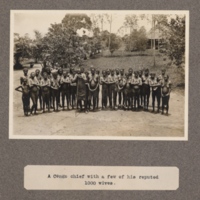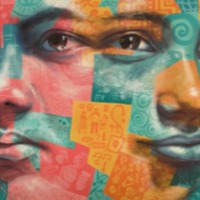
Ani R.
There are an estimated 61,000 people living in modern slavery in Saudi Arabia (GSI 2018). It is a source and destination country for men and women trafficked from South and South East Asia and Africa. People voluntarily migrate to the country to work in a variety of sectors including construction and domestic service; many of these workers are vulnerable to forced labour. Traffickers and brokers often illegally recruit migrants to work in Saudi Arabia and subsequently forced them into domestic servitude or debt bondage. Female domestic workers are particularly at risk of trafficking due to their isolation inside private residences. Non-payment or late payment of wages remains a complaint from foreign workers, while employer's withholding of worker's passports remains a significant problem. Trafficking perpetrators include businesses of all sizes, private families, recruitment companies in both Saudi Arabia and labor-sending countries, and organized criminal elements. A Saudi man, an Indonesian labour agent, and an Indonesian migrant worker deceived Ani R. into believing she was migrating for marriage. At 17 years old, she married the man to help her family but the dowery promised was not given to Ani R.’s father. While Ani was treated well the first month in Saudi Arabia, after this she was subjected to physical abuse and treated as a domestic worker forced to work long hours in the house under the threat of violence. Ani R., tried to escape but her husband found her at a shelter and bribed police to have her return.
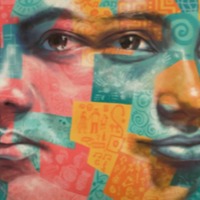
Geeta K
There are an estimated 171,000 people living in modern slavery in Nepal. Within Nepal, bonded labour exists in agriculture, brick kilns, the stone-breaking industry, and domestic work. Sex trafficking of Nepali women and girls increasingly takes place in private apartments, rented rooms, guest houses, and restaurants. Nepali and Indian children are subjected to forced labor in the country, especially in domestic work, brick kilns, and the embroidered textile, or zari, industry. Under false promises of education and work opportunities, Nepali parents give their children to brokers who instead take them to frequently unregistered children’s homes in urban locations, where they are forced to pretend to be orphans to garner donations from tourists and volunteers; some of the children are also forced to beg on the street. According to Human Rights Watch, thirty-seven percent of girls in Nepal marry before age 18 and 10 percent are married by age 15, in spite of the fact that the minimum age of marriage under Nepali law is 20 years of age. UNICEF data indicates that Nepal. Geeta says she was either ten or twelve years old when she got married. After about eight years of marriage, she has a seven-year-old daughter, a five-year-old son, and a three-year-old son.
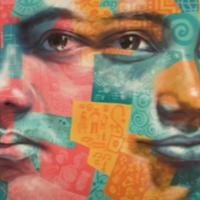
Chesa
There are an estimated 3.8 million people living in conditions of modern slavery in China (GSI 2018). Women and girls from South Asia, Southeast Asia and Africa are trafficked in to forced marriage in the country for fees of up to £30,000. The gender imbalance caused by the One Child Policy and the cultural preference for male children, has caused a shortage of women which has led to the trafficking of women to be sold as brides. As a result many women find themselves either deceived by promises of employment, sold or abducted and forced into marrying Chinese men who have paid for them. Kachin people are an ethnic minority who are predominantly Christian. Armed conflict between Myanmar military and the Kachin Independence Army has made life in the area difficult. This was exacerbated in 2011 with the end of a cease fire that left over 100,000 people internally displaced. In the camp where many of these people live there is little opportunity to earn a living. The government have made it worse by blocking aid to displaced people. This has led to women and girls becoming particularly vulnerable to trafficking as they search for jobs outside the country, often in China. Chesa was trafficked from Myanmar to China and forced to marry a Chinese man. She tells of how, in unfamiliar surroundings in a strange country, she had her movement restricted and did not know how to escape.
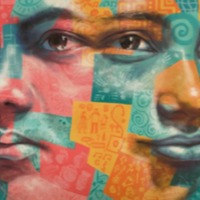
Byagari Anitha
It is estimated that almost 8 million people are living in conditions of modern slavery in India (GSI 2018). The skewed sex ratio in some regions of India has fuelled the trafficking and selling of women and young girls as brides within India. Women are reportedly sold off into marriage by their families, sometimes at a young age, and end up enduring severe abuse, rape and exploitation by their husbands. It is also reported that women and girls from impoverished backgrounds have been lured by promises of marriage by younger men from urban areas, then forced into sex work once married. Byagari Anitha wanted to continue her studies, but was forced to marry a boy from her village after her father became terminally ill. Though the authorities attempted to intervene, Byagari’s family forced her to marry in a secret ceremony against her will.
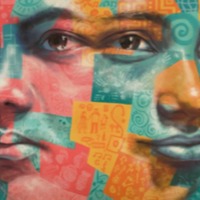
Veeramma
It is estimated that almost 8 million people are living in conditions of modern slavery in India (GSI 2018). The skewed sex ratio in some regions of India has fuelled the trafficking and selling of women and young girls as brides within India. Women are reportedly sold off into marriage by their families, sometimes at a young age, and end up enduring severe abuse, rape and exploitation by their husbands. It is also reported that women and girls from impoverished backgrounds have been lured by promises of marriage by younger men from urban areas, then forced into sex work once married. Veeramma was forced to marry at the age of 12. She works along with her husband on a cottonseed farm, however she does not receive the money she earns. After 3 years of marriage, at the age of 15, Veeramma is worried about not having children, fearing her relationship with her husband if she does not conceive
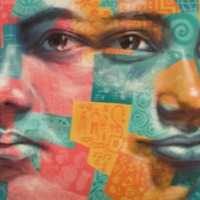
Anessa
There are an estimated 592,000 people living in modern slavery in Bangladesh (GSI 2018). Men, women and children are subjected to forced labour and sex trafficking. Bangladesh is host to more than 1 million undocumented Rohingya, including hundreds of thousands who fled Burma in previous decades. The Rohingya community’s stateless status and inability to work legally increases their vulnerability to human trafficking. Rohingya women and girls are reportedly recruited from refugee camps for domestic work and are instead subjected to sex trafficking. Within the country, Bangladeshi children and adults are subjected to sex trafficking, domestic servitude, and forced and bonded labor, in which traffickers exploit an initial debt assumed by a worker as part of the employment terms. Anessa was 13 years old when she married her 50 year old employer Samad. Once married, Samad told Anessa that she would go work abroad. A job was found for Samad in Kuwait, where upon arrival, she was told she would engage in sex work. Samad sent what money she received back to her husband, however upon returning to Bangladesh found out that her husband had divorced her.

Bukola Oriola (Narrative 2)
There are an estimated 403,000 people living in conditions of modern slavery in the United States (GSI 2018). The US attracts migrants and refugees who are particularly at risk of vulnerability to human trafficking. Trafficking victims often responding to fraudulent offers of employment in the US migrate willingly and are subsequently subjected to conditions of involuntary servitude in industries such as forced labour and commercial sexual exploitation. Bukola Oriola, a Nigerian international news journalist was on a visit to New York to cover the UN 50th Anniversary, when she was invited by the man who it had arranged would be her husband to visit him in Minnesota. Upon arrival, he convinced her to stay, organising a spousal visa. However, Bukola soon found herself confined to the home with her movements monitored at all times. She was finally able to escape her situation after the birth of her child with the help of a public health nurse.

Yeonmi Park (Narrative 2)
The Global Slavery Index 2018 estimates that there are 2,640,000 people living in conditions of modern slavery in The Democratic People’s Republic of Korea (North Korea). Men, women and children are subjected to forced labour and sex trafficking. Government oppression in the DPRK prompts many North Koreans to flee the country in ways that make them vulnerable to human trafficking in destination countries. Many of the estimated 10 000 North Korean women and girls who have migrated illegally to China to flee abuse and human rights violation are particularly vulnerable to trafficking. Some lure, drug, detain or kidnap North Korean women on their arrival, others offer jobs but subsequently force the women into prostitution, domestic service, or forced marriage. If found, Chinese authorities often repatriate victims back to the DPRK where they are subjected to harsh punishment including forced labour in labour camps or death. Yeonmi Park was 13 years old a broker offered her and her mother a chance to escape starvation in North Korea to China. However, when they arrived Park tells of how the first thing she saw was her mother raped. Both Park and her mother were sold to Chinese men as brides. Park was able to escape China to South Korea by crossing the Gobi desert. She is now studying at Columbia University in New York and runs a non-profit organisation to save other girls trafficked to China.
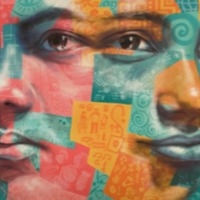
Lee Jeong-Ae
The Democratic People’s Republic of Korea (North Korea) is a source country for men, women and children who are subjected to forced labour and sex trafficking. Government oppression in the DPRK prompts many North Koreans to flee the country in ways that make them vulnerable to human trafficking in destination countries. Many of the estimated 10 000 North Korean women and girls who have migrated illegally to China to flee abuse and human rights violation are particularly vulnerable to trafficking. Some lure, drug, detain or kidnap North Korean women on their arrival, others offer jobs but subsequently force the women into prostitution, domestic service, or forced marriage. If found, Chinese authorities often repatriate victims back to the DPRK where they are subjected to harsh punishment including forced labour in labour camps or death. Lee Jeong-Ae, was trafficked to China and forced to marry a Chinese man. She now works as a karaoke hostess in Harbin
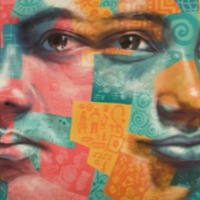
Kang Sun-Mi
The Democratic People’s Republic of Korea (North Korea) is a source country for men, women and children who are subjected to forced labour and sex trafficking. Government oppression in the DPRK prompts many North Koreans to flee the country in ways that make them vulnerable to human trafficking in destination countries. Many of the estimated 10 000 North Korean women and girls who have migrated illegally to China to flee abuse and human rights violation are particularly vulnerable to trafficking. Some lure, drug, detain or kidnap North Korean women on their arrival, others offer jobs but subsequently force the women into prostitution, domestic service, or forced marriage. If found, Chinese authorities often repatriate victims back to the DPRK where they are subjected to harsh punishment including forced labour in labour camps or death. Kang Sun-Mi, 35, was forced to marry a Chinese man after he ‘bought’ her. She was subjected to physical abuse and had her movement restricted, being locked inside the house.
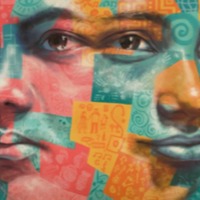
Chun Young-Hee
The Democratic People’s Republic of Korea (North Korea) is a source country for men, women and children who are subjected to forced labour and sex trafficking. Government oppression in the DPRK prompts many North Koreans to flee the country in ways that make them vulnerable to human trafficking in destination countries. Many of the estimated 10 000 North Korean women and girls who have migrated illegally to China to flee abuse and human rights violation are particularly vulnerable to trafficking. Some lure, drug, detain or kidnap North Korean women on their arrival, others offer jobs but subsequently force the women into prostitution, domestic service, or forced marriage. If found, Chinese authorities often repatriate victims back to the DPRK where they are subjected to harsh punishment including forced labour in labour camps or death. Chun Young-Hee was sold by traffickers in China twice on the bride market. Though she attempted to escape, fear of being caught led her to returning to her Chinese husband.
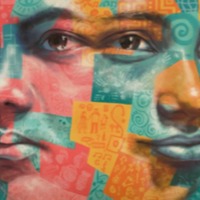
Ho Kyung-Soon
The Democratic People’s Republic of Korea (North Korea) is a source country for men, women and children who are subjected to forced labour and sex trafficking. Government oppression in the DPRK prompts many North Koreans to flee the country in ways that make them vulnerable to human trafficking in destination countries. Many of the estimated 10 000 North Korean women and girls who have migrated illegally to China to flee abuse and human rights violation are particularly vulnerable to trafficking. Some lure, drug, detain or kidnap North Korean women on their arrival, others offer jobs but subsequently force the women into prostitution, domestic service, or forced marriage. If found, Chinese authorities often repatriate victims back to the DPRK where they are subjected to harsh punishment including forced labour in labour camps or death. Ho Kyung-Soon was told she could make money working in China, however upon arrival she was sold to a man 12 years her senior to be his wife.
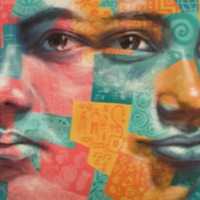
Cho Cho
The internal migration of Chinese people seeking work has created an opportunity for human traffickers in China. Moreover the gender imbalance caused by the One Child Policy and the cultural preference for male children, has caused a shortage of women which has led to the trafficking of women to be sold as brides. As a result many women find themselves either deceived by promises of employment, sold or abducted and forced into marrying Chinese men who have paid for them. Women and girls are kidnapped or recruited through marriage brokers and transported to China from Africa, Asia and North Korea where some are subjected to commercial sex or forced labor. Cho Cho, who was 18 and married, was selling the betel nut chew so popular with Burmese men when a man from her neighborhood approached her with the promise of a job in Mandalay. However, instead of a job, Cho Cho found herself on a truck bound for China and upon arrival, was sold to a Chinese man to be married. After refusing to marry the man that bought her, Cho Cho was forced to work as a labourer. She was finally able to escape to the police who deported her back to Burma.
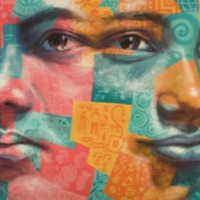
Aye Aye
The internal migration of Chinese people seeking work has created an opportunity for human traffickers in China. Moreover the gender imbalance caused by the One Child Policy and the cultural preference for male children, has caused a shortage of women which has led to the trafficking of women to be sold as brides. As a result many women find themselves either deceived by promises of employment, sold or abducted and forced into marrying Chinese men who have paid for them. Women and girls are kidnapped or recruited through marriage brokers and transported to China from Africa, Asia and North Korea where some are subjected to commercial sex or forced labor. Aye Aye was a 16-year-old housekeeper in Myanmar (Burma) helping her widowed father and two brothers, earning a dollar a day, when her boss offered her a better life and a U.S.$90-a-month job on the border with China. However, rather than a better job Aye Aye was sold in to marriage with a Chinese man and was subjected to daily beatings by his family.

Sook Joo
The Democratic People’s Republic of Korea (North Korea) is a source country for men, women and children who are subjected to forced labour and sex trafficking. Government oppression in the DPRK prompts many North Koreans to flee the country in ways that make them vulnerable to human trafficking in destination countries. Many of the estimated 10, 000 North Korean women and girls who have migrated illegally to China to flee abuse and human rights violation are particularly vulnerable to trafficking. Some lure, drug, detain or kidnap North Korean women on their arrival, others offer jobs but subsequently force the women into prostitution, domestic service, or forced marriage. If found, Chinese authorities often repatriate victims back to the DPRK where they are subjected to harsh punishment including forced labour in labour camps or death. Sook Joo was working in Moo-San station when she fled North Korea to China in search of a better life. However, upon arrival she was sold to a Chinese man and tells of how she was treated as less than human.
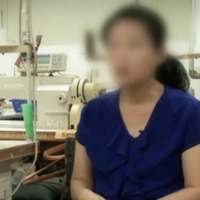
Mee Yon
The Democratic People’s Republic of Korea (North Korea) is a source country for men, women and children who are subjected to forced labour and sex trafficking. Government oppression in the DPRK prompts many North Koreans to flee the country in ways that make them vulnerable to human trafficking in destination countries. Many of the estimated 10, 000 North Korean women and girls who have migrated illegally to China to flee abuse and human rights violation are particularly vulnerable to trafficking. Some lure, drug, detain or kidnap North Korean women on their arrival, others offer jobs but subsequently force the women into prostitution, domestic service, or forced marriage. If found, Chinese authorities often repatriate victims back to the DPRK where they are subjected to harsh punishment including forced labour in labour camps or death.Mee Yon was heartbroken after the death of her child due to starvation when she decided to flee to China. After crossing the Tumen River in to China Mee Yon followed people who she thought were taking her to a job where she could make a better life for herself and her family. However, after arriving in a rural village, she was told a Chinese man had paid for her to be his wife. Mee Yon attempted to escape to South Korea but was caught and taken to the investigation department and returned to North Korea.

Chin Soon
The Democratic People’s Republic of Korea (North Korea) is a source country for men, women and children who are subjected to forced labour and sex trafficking. Government oppression in the DPRK prompts many North Koreans to flee the country in ways that make them vulnerable to human trafficking in destination countries. Many of the estimated 10, 000 North Korean women and girls who have migrated illegally to China to flee abuse and human rights violation are particularly vulnerable to trafficking. Some lure, drug, detain or kidnap North Korean women on their arrival, others offer jobs but subsequently force the women into prostitution, domestic service, or forced marriage. If found, Chinese authorities often repatriate victims back to the DPRK where they are subjected to harsh punishment including forced labour in labour camps or death. Chin Soon tells of the starvation her family suffered in North Korea that led to her travelling to China in the hopes of providing for her family. However, upon arriving in China she was sold to a Chinese man as his wife. Chin Soon tells of how she learned of the outside world of music from her Chinese husband.
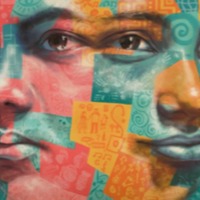
Noi
The internal migration of Chinese people seeking work has created an opportunity for human traffickers in China. Moreover, the gender imbalance caused by the One Child Policy and the cultural preference for male children, has caused a shortage of women which has led to the trafficking of women to be sold as brides. As a result, many women find themselves either deceived by promises of employment, sold or abducted and forced into marrying Chinese men who have paid for them. The prevalence of poverty in China makes the poor more vulnerable to enslavement. With the National Bureau of Statistics estimating that 70,170,000 are still living in poverty, people are more desperate and thus more likely to be receptive to fraudulent job offers. Noi was just 17 years old when she was forced to drop out of high school in northern Laos’ Luang Namtha province to earn money for her family. When a middleman approached her in early 2015 about marrying a man across the border in China in exchange for around 40 million kip (U.S. $4,830)—despite the legal age for marriage in China being 20—she jumped at the chance. After holding a small party with her relatives, according to the traditions of her Leu ethnic group, Noi travelled to China to live with the man. During the first three months, he treated her kindly and sent small payments to her parents in Laos, but soon his demeanour changed and he began to beat her.
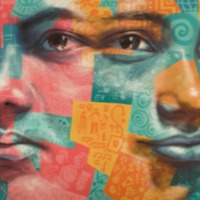
Flutura
Born in Albania, Flutura was trafficked into Italy, where trafficking victims also arrive from Nigeria, Romania, Bulgaria, China, and South America. One NGO estimates that 48 percent of the prostitutes in Italy are from Eastern Europe. Many women are trafficked into richer Western European countries from the poorer Eastern countries, including Albania. The fall of communism in 1991 led to a rise in organized crime in Albania: in 2001 it was estimated 100,000 Albanian women and girls had been trafficked to Western European and other Balkan countries in the preceding ten years. More than 65 percent of Albanian sex-trafficking victims are minors at the time they are trafficked, and at least 50 percent of victims leave home under the false impression that they will be married or engaged to an Albanian or foreigner and live abroad. Another ten percent are kidnapped or forced into prostitution. The women and girls receive little or no pay for their work, and are commonly tortured if they do not comply.
